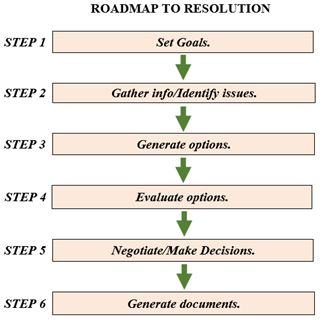The CLI MN East Metro Group invites you to join their Happy Hour on Thursday June 13 from 4 – 6:30 pm
I once heard that parenting books are one of the largest segments in non-fiction  publishing. Everyone apparently thinks they have tips and ideas to help others parent. As a collaborative divorce attorney, clients often seek guidance and support in co-parenting during and after the divorce. No book ever fits the bill. While traditional books may offer some guidance, co-parenting after divorce is a unique situation. Not only do children sometimes have challenges as the result of the divorce, parents too are transitioning into a new reality.
In collaborative divorce, we often work with a family specialist or child specialist to help families transition from one home, into two. This neutral party can assist in many aspects of parenting, including the following:
publishing. Everyone apparently thinks they have tips and ideas to help others parent. As a collaborative divorce attorney, clients often seek guidance and support in co-parenting during and after the divorce. No book ever fits the bill. While traditional books may offer some guidance, co-parenting after divorce is a unique situation. Not only do children sometimes have challenges as the result of the divorce, parents too are transitioning into a new reality.
In collaborative divorce, we often work with a family specialist or child specialist to help families transition from one home, into two. This neutral party can assist in many aspects of parenting, including the following:
 publishing. Everyone apparently thinks they have tips and ideas to help others parent. As a collaborative divorce attorney, clients often seek guidance and support in co-parenting during and after the divorce. No book ever fits the bill. While traditional books may offer some guidance, co-parenting after divorce is a unique situation. Not only do children sometimes have challenges as the result of the divorce, parents too are transitioning into a new reality.
In collaborative divorce, we often work with a family specialist or child specialist to help families transition from one home, into two. This neutral party can assist in many aspects of parenting, including the following:
publishing. Everyone apparently thinks they have tips and ideas to help others parent. As a collaborative divorce attorney, clients often seek guidance and support in co-parenting during and after the divorce. No book ever fits the bill. While traditional books may offer some guidance, co-parenting after divorce is a unique situation. Not only do children sometimes have challenges as the result of the divorce, parents too are transitioning into a new reality.
In collaborative divorce, we often work with a family specialist or child specialist to help families transition from one home, into two. This neutral party can assist in many aspects of parenting, including the following:
- Coach parents on telling the children about divorce.
- Bring the children’s voice to the process by hearing their concerns and hopes and communicating them to the parents.
- Communication coaching.
- Developing a parenting plan and schedule for parenting in two homes.
- How to maintain relationships with extended family.
- Consulting after divorce as new things arise.
- Periodic check-ins on parenting and child development.
- Any other parenting challenge that arises during or after the divorce.
 As many know, because Minnesota is a no fault divorce state, one spouse not being ready does not need to stop the process from moving forward. The ready spouse can file for divorce and the process moves on in court with little control of the reluctant spouse.
A potential client recently came in for a consult and, as often is the case, her husband was struggling to move forward in the process. They were at very different points on the divorce readiness scale – she was ready, he was not. This is quite typical. The other spouse is sometimes called “reluctant” or “in denial.”
When one spouse is looking for a non-adversarial, out-of-court alternative (like mediation or collaborative divorce), there is more of a need to bring that other spouse along. The reluctant spouse really can delay the process and interfere with the non-reluctant spouse’s desire to divorce. This potential client said something very interesting to me. She said, “I know I am committed to collaborative divorce, but I am learning that this does not have to be a collaborative decision.”
This realization was profound. She realized that she could control the process (with her husband’s agreement), even if her husband never agrees with the decision to divorce.
It is common during the divorce process to have spouses be at different comfort levels with the decision to divorce. These levels of readiness can change throughout the process and even vary greatly from one meeting to another. The challenge often lies with helping the reluctant spouse commit to a collaborative process, while acknowledging his or her disagreement with the process.
A good collaborative attorney can strategize ways to bring the reluctant spouse into the process and help move things forward. Ways to teach him or her about the divorce options and lay out the pros and cons of different processes for divorce. To learn more, contact Kimberly Miller.
As many know, because Minnesota is a no fault divorce state, one spouse not being ready does not need to stop the process from moving forward. The ready spouse can file for divorce and the process moves on in court with little control of the reluctant spouse.
A potential client recently came in for a consult and, as often is the case, her husband was struggling to move forward in the process. They were at very different points on the divorce readiness scale – she was ready, he was not. This is quite typical. The other spouse is sometimes called “reluctant” or “in denial.”
When one spouse is looking for a non-adversarial, out-of-court alternative (like mediation or collaborative divorce), there is more of a need to bring that other spouse along. The reluctant spouse really can delay the process and interfere with the non-reluctant spouse’s desire to divorce. This potential client said something very interesting to me. She said, “I know I am committed to collaborative divorce, but I am learning that this does not have to be a collaborative decision.”
This realization was profound. She realized that she could control the process (with her husband’s agreement), even if her husband never agrees with the decision to divorce.
It is common during the divorce process to have spouses be at different comfort levels with the decision to divorce. These levels of readiness can change throughout the process and even vary greatly from one meeting to another. The challenge often lies with helping the reluctant spouse commit to a collaborative process, while acknowledging his or her disagreement with the process.
A good collaborative attorney can strategize ways to bring the reluctant spouse into the process and help move things forward. Ways to teach him or her about the divorce options and lay out the pros and cons of different processes for divorce. To learn more, contact Kimberly Miller.
 Do you need a divorce team and if so who should be on that team? If you are going through divorce or plan to do so you should think about who you want to have on your divorce team. Who you have on your team depends on the process you have chosen.
If you are headed down the traditional litigated divorce path your attorney will be your lead team member and possibly could be the only team member. Oh sure you may bring in experts of your own and when you do experts of your soon to be ex will suddenly appear.
This is unlike a collaborative divorce where neutral professionals are commonly utilized. In mediations you may or may not have neutrals or you can also have experts, if you will, that are only on your side. The difference is in a collaborative divorce the neutrals are working together with you and your spouse to help you reach agreements. These agreements satisfy both of your needs and interests versus you both having your own experts refuting each of your positions with opposing viewpoints. When this opposing positions scenario appears it requires some outside third party to make decisions for you since you and your spouse cannot make those decisions yourselves. This ends up being a crapshoot and most likely results in decisions neither one of you are very satisfied with.
In a collaborative divorce the entire team works together for the benefit of your family. Who are the potential team members and their roles in a collaborative divorce?
Attorney:
Do you need a divorce team and if so who should be on that team? If you are going through divorce or plan to do so you should think about who you want to have on your divorce team. Who you have on your team depends on the process you have chosen.
If you are headed down the traditional litigated divorce path your attorney will be your lead team member and possibly could be the only team member. Oh sure you may bring in experts of your own and when you do experts of your soon to be ex will suddenly appear.
This is unlike a collaborative divorce where neutral professionals are commonly utilized. In mediations you may or may not have neutrals or you can also have experts, if you will, that are only on your side. The difference is in a collaborative divorce the neutrals are working together with you and your spouse to help you reach agreements. These agreements satisfy both of your needs and interests versus you both having your own experts refuting each of your positions with opposing viewpoints. When this opposing positions scenario appears it requires some outside third party to make decisions for you since you and your spouse cannot make those decisions yourselves. This ends up being a crapshoot and most likely results in decisions neither one of you are very satisfied with.
In a collaborative divorce the entire team works together for the benefit of your family. Who are the potential team members and their roles in a collaborative divorce?
Attorney:
- Provides legal guidance, counsel, and advice to you
- Supports you in resolving the areas of dispute that arise
- Cooperates with other Collaborative team members to guide clients through the process
- Works in joint meetings with both clients and the other attorney to create legal documents to necessary to complete the process
- Are professionally licensed as attorneys
- Helps clients effectively communicate during the process which can minimize conflict and lower cost
- Helps to maintain a safe environment to discuss difficult issues with mutual respect
- Helps you with advocating for yourself
- Helps you minimize emotions to better manage reactivity to stress
- Is licensed as a mental health professional or a Rule 114 qualified mediator
- Identifies and evaluates tax consequences
- Assists clients with developing spending plans (budgets)
- Develops current and future cash flow analyses
- Helps clients/attorneys generate and evaluate financial options
- Guides the team discussion on financial matters
- Is professionally licensed as a financial expert
- Provides neutral guidance and education to parents
- Helps parents create “we statements” to talk with their children about the divorce or break up
- Meets with parents and children to obtain developmental information, identify family strengths and identify goals to meet children’s needs
- Meets with children to assess their hopes and needs for the future
- Gives feedback to parents and professional Team members about the needs of children
- Assists parents in the creation of a developmentally responsive Parenting Plan
- Works with the Neutral Coach to strengthen parents’ co-parenting relationship
- Is licensed as a mental health professional
 Often when we decide to do something of significance, like go on vacation, obtain a college degree, search for a new job, or save for a future purchase we develop a plan. If you are serious about the task set before you, you will develop a written plan to keep you on track and measure your progress.
Getting unmarried, as I now refer to divorce, should be no different. In fact, if you choose to use a collaborative divorce process, we utilize a written document called “Roadmap to Resolution.” I have found the use of this Roadmap extends beyond divorce planning. I use it as a general problem-solving model. The Roadmap has 6 essential steps.
Often when we decide to do something of significance, like go on vacation, obtain a college degree, search for a new job, or save for a future purchase we develop a plan. If you are serious about the task set before you, you will develop a written plan to keep you on track and measure your progress.
Getting unmarried, as I now refer to divorce, should be no different. In fact, if you choose to use a collaborative divorce process, we utilize a written document called “Roadmap to Resolution.” I have found the use of this Roadmap extends beyond divorce planning. I use it as a general problem-solving model. The Roadmap has 6 essential steps.
- Set Goals The four basic sets of big picture goals include: Relationship goals between you and your soon to be ex-spouse Goals related to your children regardless of their ages Financial goals as to how you and your spouse would like your future financial lives to look so you both can have the greatest sense of financial well being with the resources you have Process goals as to how you and your spouse would like the process to work for you
- Gather Information and Identify Issues This includes gathering all financial documents and other relevant information that will be necessary to itemize all assets, liabilities, income, estimated reasonable and necessary living expenses, and property received as a gift, inherited, or acquired before the marriage. All of this information is documented in your final divorce decree. If you have children, this also includes information about your children their needs and special activities and costs associated with each one.
- Generate Options This step is when the collaborative team including attorneys, coach, child specialist, financial neutral, and clients brainstorm to identify any options that come to mind regardless of how silly or unpleasant those options might sound initially. The key is to write down as many options as possible without anyone commenting or trying to evaluate any stated options.
- Evaluate Options Here the clients indentify the options they would like to evaluate and consider. It is at this stage clients can fully explore the pros and cons of each of the options listed and prioritize them.
- Negotiate/Make Decisions After fully evaluating any options clients are able to negotiate and make decisions they both can live with.
- Generate Documents Once all necessary decisions are made, the attorneys go to work to document agreements by preparing a draft decree for each spouse to review and ultimately sign.
 “Many promising reconciliations have broken down because, while both parties came prepared to forgive, neither party came prepared to be forgiven.” – Charles Williams, British author and translator
I recently came across this quote about forgiveness and reconciliation and it reminded me of the collaborative divorce process. I am a collaborative attorney. I often see couples enter into the divorce process with ideas about forgiveness. I often see clients come into the divorce process hoping to end the anger or negative feelings. They may want to make things better for the sake of the children or to feel better themselves, whatever the reason, forgiveness can be one of the most impactful elements of divorce.
To forgive is to stop feeling anger toward someone who has done something wrong or to stop blaming someone. In divorce, forgiveness may revolve around infidelity or poor financial management or lessening attraction for another. Emotionally clients often prepare to own their own feelings. They may have considered the benefits of forgiving the other and moving forward in a more positive manner.
Like the quote above implies, it is often easier to think about forgiving someone else. When someone is forgiven himself or herself, however, it may be tougher to accept. The selflessness of the other during the challenging process of divorce can sometimes be overwhelming. Genuine forgiveness may be unexpected. It can lead to breakthrough moments and opportunities to dig deeper to find more compassionate and amicable resolutions.
Forgiveness and divorce are intertwined. The collaborative divorce process is designed and supported to allow the greatest opportunities for forgiveness and peacemaking.
“Many promising reconciliations have broken down because, while both parties came prepared to forgive, neither party came prepared to be forgiven.” – Charles Williams, British author and translator
I recently came across this quote about forgiveness and reconciliation and it reminded me of the collaborative divorce process. I am a collaborative attorney. I often see couples enter into the divorce process with ideas about forgiveness. I often see clients come into the divorce process hoping to end the anger or negative feelings. They may want to make things better for the sake of the children or to feel better themselves, whatever the reason, forgiveness can be one of the most impactful elements of divorce.
To forgive is to stop feeling anger toward someone who has done something wrong or to stop blaming someone. In divorce, forgiveness may revolve around infidelity or poor financial management or lessening attraction for another. Emotionally clients often prepare to own their own feelings. They may have considered the benefits of forgiving the other and moving forward in a more positive manner.
Like the quote above implies, it is often easier to think about forgiving someone else. When someone is forgiven himself or herself, however, it may be tougher to accept. The selflessness of the other during the challenging process of divorce can sometimes be overwhelming. Genuine forgiveness may be unexpected. It can lead to breakthrough moments and opportunities to dig deeper to find more compassionate and amicable resolutions.
Forgiveness and divorce are intertwined. The collaborative divorce process is designed and supported to allow the greatest opportunities for forgiveness and peacemaking.
 I’m not always a very wise shopper. I tend to fall into the trap of thinking something is a good deal if I save money. And at least in the short term, my cheaper purchase may do just fine.
But inevitably, cheap purchases lack staying power and don’t hold up well. I was reminded of this recently when looking in dismay at the boots I bought on sale at a discount shoe store. After one season of wear, the leather has frayed on the toes of both boots, and they won’t be wearable next season. In contrast, the Frye boots I splurged on when I was accepted into graduate school decades ago still look great. I knew at the time that these boots were an investment meant to last.
When some potential clients hear about Collaborative Team Practice, their first response is, “That sounds too expensive. I don’t want to spend much money on a divorce.” Because most people have to budget money with some care, it can easily feel like professional fees are not where limited resources should go. But be aware of the trap of thinking something is a good deal if it saves money.
A quality divorce process is an investment in the future, especially when children are involved. Collaborative professionals are experts in conflict resolution and creative problem solving, and can respectfully support families through the crisis of divorce to sustainable resolutions. Collaborative professionals are deeply knowledgeable in their areas of expertise—family law, financial resolutions, children’s needs in divorce, parenting plans and co-parenting skills. Simply put, the right Collaborative professional will help you understand what you may well not know about how to make the best possible decisions on behalf of yourself and your family.
The least expensive divorce options may seem adequate at the time, but the results are often not sustainable. This may mean heading back into a post-decree legal process that is guaranteed to be costly. Collaborative Team Practice is not the best fit for all divorces, but when it is, it is clearly an investment in quality outcomes with staying power for the future. For more information, check out the Collaborative Law Institute website.
I’m not always a very wise shopper. I tend to fall into the trap of thinking something is a good deal if I save money. And at least in the short term, my cheaper purchase may do just fine.
But inevitably, cheap purchases lack staying power and don’t hold up well. I was reminded of this recently when looking in dismay at the boots I bought on sale at a discount shoe store. After one season of wear, the leather has frayed on the toes of both boots, and they won’t be wearable next season. In contrast, the Frye boots I splurged on when I was accepted into graduate school decades ago still look great. I knew at the time that these boots were an investment meant to last.
When some potential clients hear about Collaborative Team Practice, their first response is, “That sounds too expensive. I don’t want to spend much money on a divorce.” Because most people have to budget money with some care, it can easily feel like professional fees are not where limited resources should go. But be aware of the trap of thinking something is a good deal if it saves money.
A quality divorce process is an investment in the future, especially when children are involved. Collaborative professionals are experts in conflict resolution and creative problem solving, and can respectfully support families through the crisis of divorce to sustainable resolutions. Collaborative professionals are deeply knowledgeable in their areas of expertise—family law, financial resolutions, children’s needs in divorce, parenting plans and co-parenting skills. Simply put, the right Collaborative professional will help you understand what you may well not know about how to make the best possible decisions on behalf of yourself and your family.
The least expensive divorce options may seem adequate at the time, but the results are often not sustainable. This may mean heading back into a post-decree legal process that is guaranteed to be costly. Collaborative Team Practice is not the best fit for all divorces, but when it is, it is clearly an investment in quality outcomes with staying power for the future. For more information, check out the Collaborative Law Institute website.
 Most of my work as a lawyer involves representing clients in Collaborative divorces, and most of those cases involve the use of neutral experts to advise the couple on finances, child development, and communication/relationship dynamics. The idea is to provide them the best professional information in a non-adversarial setting so that they can make well-informed choices when resolving their divorce issues. Very often, the first of these professionals a couple visits will be their neutral coach/facilitator, whose responsibility, if hired, (among many others) will be to help couples appreciate where their communication styles get in the way of decision-making. I’m fortunate to have some wonderful professionals available to serve my clients in that role.
In recent years, the coach I work with most often is Lee Eddison, someone who embodies the art of compassionate listening, but who doesn’t hesitate to call a spade a shovel after more nuanced attempts at guidance have been unavailing. One of the assessment tools she uses is to ask each member of the couple to say three positive things about their spouse’s parenting ability. “He doesn’t suck,” doesn’t count, either. She knows that if someone can appreciate a positive contribution to the family made by someone they dislike, there’s an excellent chance they can have an interest-based conversation en route to a resolution. That’s not to say there aren’t other bumps in the road, or good reasons to end the intimate partnership. But the ability to appreciate that duality in their partner at a time when it counts–when you’d least like to–gives that appreciation a power and a significance it won’t have later. It has proven to be a fair bellwether of success in a Collaborative process.
Very few individuals who go through a divorce are all good or all bad. There’s a saying in the court system that “In criminal cases, we see bad people at their best, and in family cases we see good people at their worst.” It’s a sound bite, of course, but it’s often true. For divorcing couples who can appreciate the good things their partner has contributed, the chances of escaping the not-so-good parts without making it worse are much higher.
Most of my work as a lawyer involves representing clients in Collaborative divorces, and most of those cases involve the use of neutral experts to advise the couple on finances, child development, and communication/relationship dynamics. The idea is to provide them the best professional information in a non-adversarial setting so that they can make well-informed choices when resolving their divorce issues. Very often, the first of these professionals a couple visits will be their neutral coach/facilitator, whose responsibility, if hired, (among many others) will be to help couples appreciate where their communication styles get in the way of decision-making. I’m fortunate to have some wonderful professionals available to serve my clients in that role.
In recent years, the coach I work with most often is Lee Eddison, someone who embodies the art of compassionate listening, but who doesn’t hesitate to call a spade a shovel after more nuanced attempts at guidance have been unavailing. One of the assessment tools she uses is to ask each member of the couple to say three positive things about their spouse’s parenting ability. “He doesn’t suck,” doesn’t count, either. She knows that if someone can appreciate a positive contribution to the family made by someone they dislike, there’s an excellent chance they can have an interest-based conversation en route to a resolution. That’s not to say there aren’t other bumps in the road, or good reasons to end the intimate partnership. But the ability to appreciate that duality in their partner at a time when it counts–when you’d least like to–gives that appreciation a power and a significance it won’t have later. It has proven to be a fair bellwether of success in a Collaborative process.
Very few individuals who go through a divorce are all good or all bad. There’s a saying in the court system that “In criminal cases, we see bad people at their best, and in family cases we see good people at their worst.” It’s a sound bite, of course, but it’s often true. For divorcing couples who can appreciate the good things their partner has contributed, the chances of escaping the not-so-good parts without making it worse are much higher.
 I am often asked to give presentations on the financial issues in divorce. I always cover what I refer to as the two financial pillars of any divorce dividing property including debts and cash flow and support. Without fail someone in attendance always asks where, do I begin? I do not know where to start. This question is asked not from a financial viewpoint but from an overall perspective of where to begin.
My response is virtually the same every time. The most important decision you have to make is the decision to end the marriage. Some take months or even years to make this decision. It is not an easy one.
If the decision is made to divorce, then the next most important decision is how to do it. What process options are available and which might be best suited for me, my spouse, and if children are present. Again not an easy decision, especially since these types of decisions are often made during times of high emotions including hurt, pain, and even anger. This is not necessarily the best frame of mind for making such life changing decisions.
Having experienced divorce after a 30-year marriage and in my professional experience as a financial neutral, financial mediator, and supporting individual clients and their attorneys, the answer where to begin may be somewhere not so obvious, a divorce coach trained in collaborative divorce. I say this not because you will end up or be steered to a collaborative divorce, but rather that a divorce coach can help you and your spouse navigate the emotions and challenges during any divorce process and beyond.
A collaboratively trained divorce coach can help explain process options in a manner to help you no matter what process you may choose. A neutral divorce coach can also help recommend other divorce professionals including a child specialist, financial specialist, and attorneys who can work together with you and your spouse in any divorce process. In addition, a divorce coach can help save you time, money, and heartache by guiding you and helping you manage emotions throughout the process.
How do I find a collaboratively trained divorce coach? Click here to find coaches throughout the MSP metro area. By clicking on their name, you can read their profiles. Many, if not all of them, will provide a free initial consultation allowing you to ask questions, evaluate each individual and make informed decisions best suited to you and your family. Divorce coaches are one of the best resources available to anyone considering divorce and wondering “where do I begin.”
I am often asked to give presentations on the financial issues in divorce. I always cover what I refer to as the two financial pillars of any divorce dividing property including debts and cash flow and support. Without fail someone in attendance always asks where, do I begin? I do not know where to start. This question is asked not from a financial viewpoint but from an overall perspective of where to begin.
My response is virtually the same every time. The most important decision you have to make is the decision to end the marriage. Some take months or even years to make this decision. It is not an easy one.
If the decision is made to divorce, then the next most important decision is how to do it. What process options are available and which might be best suited for me, my spouse, and if children are present. Again not an easy decision, especially since these types of decisions are often made during times of high emotions including hurt, pain, and even anger. This is not necessarily the best frame of mind for making such life changing decisions.
Having experienced divorce after a 30-year marriage and in my professional experience as a financial neutral, financial mediator, and supporting individual clients and their attorneys, the answer where to begin may be somewhere not so obvious, a divorce coach trained in collaborative divorce. I say this not because you will end up or be steered to a collaborative divorce, but rather that a divorce coach can help you and your spouse navigate the emotions and challenges during any divorce process and beyond.
A collaboratively trained divorce coach can help explain process options in a manner to help you no matter what process you may choose. A neutral divorce coach can also help recommend other divorce professionals including a child specialist, financial specialist, and attorneys who can work together with you and your spouse in any divorce process. In addition, a divorce coach can help save you time, money, and heartache by guiding you and helping you manage emotions throughout the process.
How do I find a collaboratively trained divorce coach? Click here to find coaches throughout the MSP metro area. By clicking on their name, you can read their profiles. Many, if not all of them, will provide a free initial consultation allowing you to ask questions, evaluate each individual and make informed decisions best suited to you and your family. Divorce coaches are one of the best resources available to anyone considering divorce and wondering “where do I begin.”
 I recently attended a symposium about divorce entitled, “What’s Love Got to Do With It?” At first glance you might wonder whether we had anything to talk about. What do love and divorce have in common? Isn’t divorce the result of the loss of love? Sharing ideas with others interested in improving the divorce process reinforced my belief that love, forgiveness and compassion are the keys to divorcing well, and that divorce can indeed be a healing process.
Divorce is an all-too-common event these days. We all have friends, family members, neighbors and co-workers who have experienced becoming unmarried. Some just barely survive and are stuck looking back at their divorce with regret and resentment. Years later they continue to bad-mouth their ex and blame their divorce for their ongoing unhappiness. Their inability to be present and available has long-term consequences for their children as well.
Most of us also know people who not only survive, but thrive in their post-divorce lives. They are somehow able to accept the major changes in their day-to-day lives and move forward. By doing so, they are healthy role models for their children and fun to be around. What accounts for these vastly different outcomes?
Personality certainly has something to do with it. Some humans are blessed with more optimistic outlooks than others. Seeing the glass half full reduces anxiety about the future. Life circumstances also play a role. Good health, steady employment, and a healthy balance sheet contribute to feeling better about what lies ahead. However, several decades of experience tells me that one factor trumps everything else in terms of one’s ability to recover from divorce … the ability to forgive.
Anger, bitterness, blame and resentment are feelings associated with the loss of a loving relationship. Grieving the loss is necessary in order to get on with life. Tara Brach, a leading western teacher of Buddhist meditation, emotional healing and spiritual awakening, who was a symposium presenter, says, “Vengeance is a lazy form of grief.” Rather than being lazy and stuck, working through one’s grief with a therapist, clergy person, or trusted friend can lead to understanding and forgiveness. Acknowledgment and forgiveness of one’s own contributions to the divorce are essential, as is forgiveness of the other person.
In the Collaborative divorce process, our professional team includes a neutral coach and a child specialist, both of whom assist the parties in reaching closure with regard to their marriage and defining their future co-parenting relationship.
“When you forgive somebody who has wronged you, you’re spared the dismal corrosion of bitterness and wounded pride. For both parties, forgiveness means the freedom again to be at peace inside their own skins and to be glad in each others’ presence.”
-Fredrick Buechner
I recently attended a symposium about divorce entitled, “What’s Love Got to Do With It?” At first glance you might wonder whether we had anything to talk about. What do love and divorce have in common? Isn’t divorce the result of the loss of love? Sharing ideas with others interested in improving the divorce process reinforced my belief that love, forgiveness and compassion are the keys to divorcing well, and that divorce can indeed be a healing process.
Divorce is an all-too-common event these days. We all have friends, family members, neighbors and co-workers who have experienced becoming unmarried. Some just barely survive and are stuck looking back at their divorce with regret and resentment. Years later they continue to bad-mouth their ex and blame their divorce for their ongoing unhappiness. Their inability to be present and available has long-term consequences for their children as well.
Most of us also know people who not only survive, but thrive in their post-divorce lives. They are somehow able to accept the major changes in their day-to-day lives and move forward. By doing so, they are healthy role models for their children and fun to be around. What accounts for these vastly different outcomes?
Personality certainly has something to do with it. Some humans are blessed with more optimistic outlooks than others. Seeing the glass half full reduces anxiety about the future. Life circumstances also play a role. Good health, steady employment, and a healthy balance sheet contribute to feeling better about what lies ahead. However, several decades of experience tells me that one factor trumps everything else in terms of one’s ability to recover from divorce … the ability to forgive.
Anger, bitterness, blame and resentment are feelings associated with the loss of a loving relationship. Grieving the loss is necessary in order to get on with life. Tara Brach, a leading western teacher of Buddhist meditation, emotional healing and spiritual awakening, who was a symposium presenter, says, “Vengeance is a lazy form of grief.” Rather than being lazy and stuck, working through one’s grief with a therapist, clergy person, or trusted friend can lead to understanding and forgiveness. Acknowledgment and forgiveness of one’s own contributions to the divorce are essential, as is forgiveness of the other person.
In the Collaborative divorce process, our professional team includes a neutral coach and a child specialist, both of whom assist the parties in reaching closure with regard to their marriage and defining their future co-parenting relationship.
“When you forgive somebody who has wronged you, you’re spared the dismal corrosion of bitterness and wounded pride. For both parties, forgiveness means the freedom again to be at peace inside their own skins and to be glad in each others’ presence.”
-Fredrick Buechner

